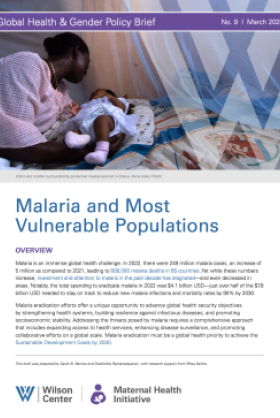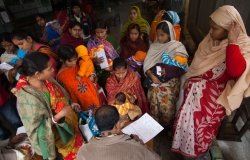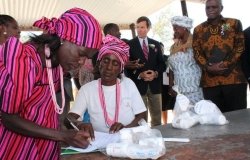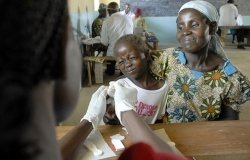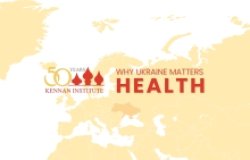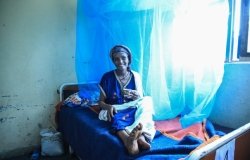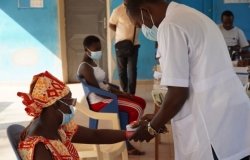Meeting the Health Challenge of Urban Poverty and Slums
The rapid urbanization of the developing world has brought the growth of slums and increases in urban poverty. Two leading experts examined how non-health- specific programs in urban areas such as housing, water and sanitation, infrastructure improvements and micro finance can improve the health conditions in slums.
Overview
Fifty percent of the world's population currently lives in cities. It is predicted that by 2030 this will increase to sixty percent of the world's population and that by 2050, 7 out of 10 people will reside in an urban setting. The majority of this growth will occur in the Global South, where most of the world's slums are found. In addition to natural causes, prospects for better health care, education and employment are causing much of the world's poor to leave rural areas and head to the cities. With the growing number of impoverished city-dwellers and slums, it is increasingly important for society to consider how it will deal with its problems in an urban context as we move into the future.
With those facts in mind, on July 27, Wilson Center on the Hill co-hosted an event with the Comparative Urban Studies Project that featured Jacob Kumaresan, Director of WHO Center for Health Development in Kobe, Japan and Richard B. Lamporte, Director of New Program Development, Jhpiego. The speakers discussed poverty and health challenges in rapidly growing urban slums. The event was moderated by Blair A. Ruble, Director of the Comparative Urban Studies Project at the Woodrow Wilson International Center for Scholars.
The prospect for the world's expanding portion of city-dwellers to live a healthy and prosperous life depends on what services and opportunities the city can offer. As Kumaresan pointed out, there is currently no shortage of problems in these environments. Among other ills, Kumaresan claimed that 170 million urban residents currently do not have access to a latrine and over 1.2 million people will die from urban air pollution this year. As more individuals migrate to cities, these problems will be compounded. Lamporte detailed the extremely unsanitary process that these residents must undertake when they do not have access to such basic services as running water and sewage systems.
Kumaresan also noted that cities have the "worst and the most unimaginable disparities when it comes to health." While urban centers have the most hospitals and attract many of the best doctors, the hospitals are often not managed or governed well. As a result, many urbanites suffer worse health care than their rural neighbors. For example, tuberculosis rates in rural parts of India are half those in urban settings. Kumaresan also emphasized that these disparities are certainly not limited to the Global South: cities in developed countries like New York and Los Angeles have to face similar inequities.
To address these issues, Kumaresan encouraged policymakers to examine the unique circumstances and conditions of their cities. As he stated, "you've got to do analytical work to see what the problems are in each city and to look not at the averages but to unmask the differentials." For example, tuberculosis has a 12 times higher rate in Osaka, Japan than it does in the rest of the country because of its high affliction among that city's homeless population. As such, it is important for local policymakers to address Osaka's tuberculosis problem by considering the related acute socio-economic conditions. Once this analysis has been conducted, Kumaresan stressed the importance of following through with concrete actions.
Lamporte later emphasized the importance of giving organizations flexibility with funding to better address unique local problems and inequities. He advised international donors to allow for a certain percentage of their funding to be used for complimentary initiatives. "Certainly the goalposts could be set, but having some element of complimentary funding ... would be extremely useful." Lamporte also advised funding initiatives to allow sufficient time to form the necessary partnerships for development projects to be successful.
As both speakers pointed out, the future of the city is increasingly the future of the world. As such, according to Lamporte, it is crucial to have "an urban optic going into the future." If not, Lamporte argued, it will be at our own peril as disease and unrest will find havens in urban slums. Both panelists argued that as the world transforms from a rural to an urban planet, it is essential for emerging and growing cities to use successful urban development examples from both the Global North and the South.
Drafted By: Joshua Nickell, Intern, Program on America and the Global Economy
David Klaus, Consulting Director, Wilson Center on the Hill
Kent Hughes, Director, Program on America and the Global Economy
Documents & Downloads
Speakers

Blair A. Ruble
Former Wilson Center Vice President for Programs (2014-2017); Director of the Comparative Urban Studies Program/Urban Sustainability Laboratory (1992-2017); Director of the Kennan Institute for Advanced Russian Studies (1989-2012) and Director of the Program on Global Sustainability and Resilience (2012-2014)
Richard Lamporte
Jacob Kumaresan
Hosted By

Urban Sustainability Laboratory
Since 1991, the Urban Sustainability Laboratory has advanced solutions to urban challenges—such as poverty, exclusion, insecurity, and environmental degradation—by promoting evidence-based research to support sustainable, equitable and peaceful cities. Read more
Thank you for your interest in this event. Please send any feedback or questions to our Events staff.


